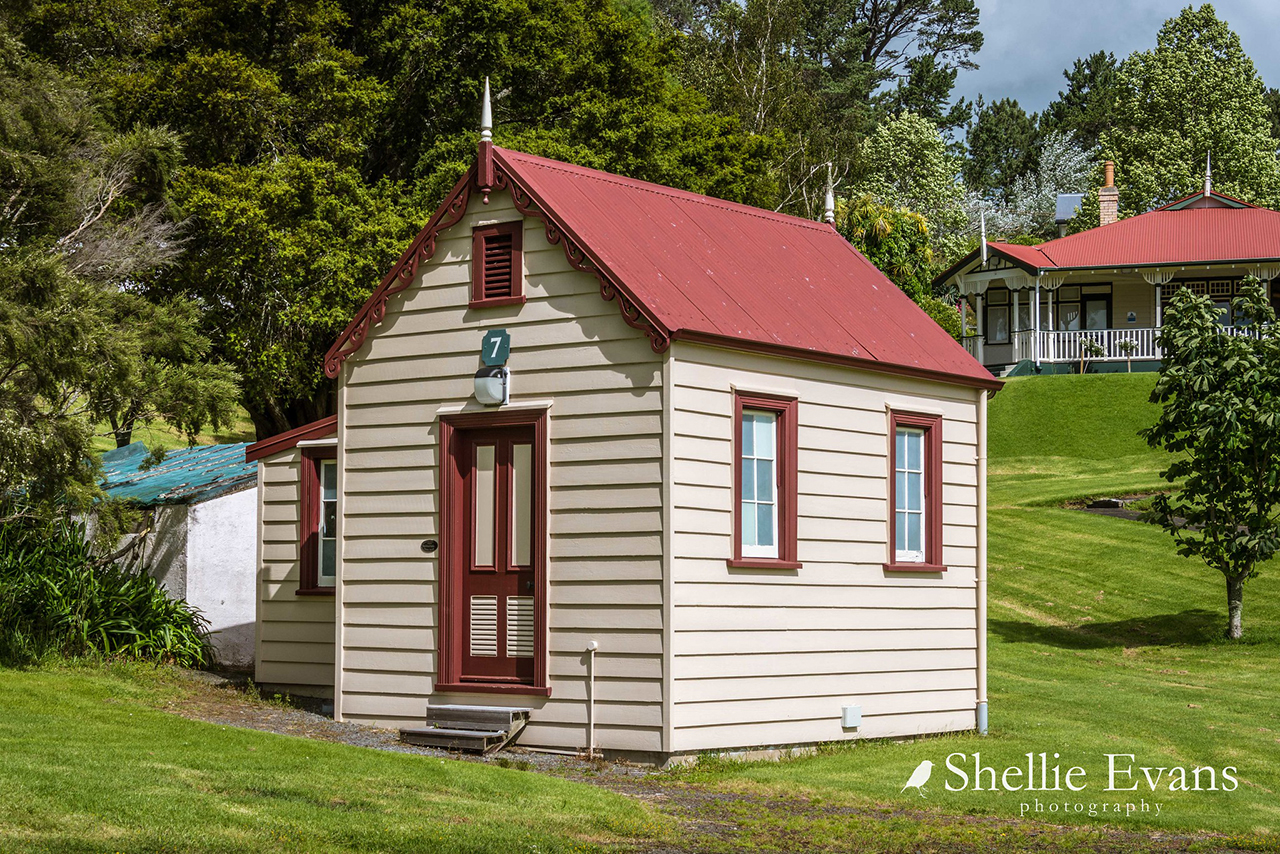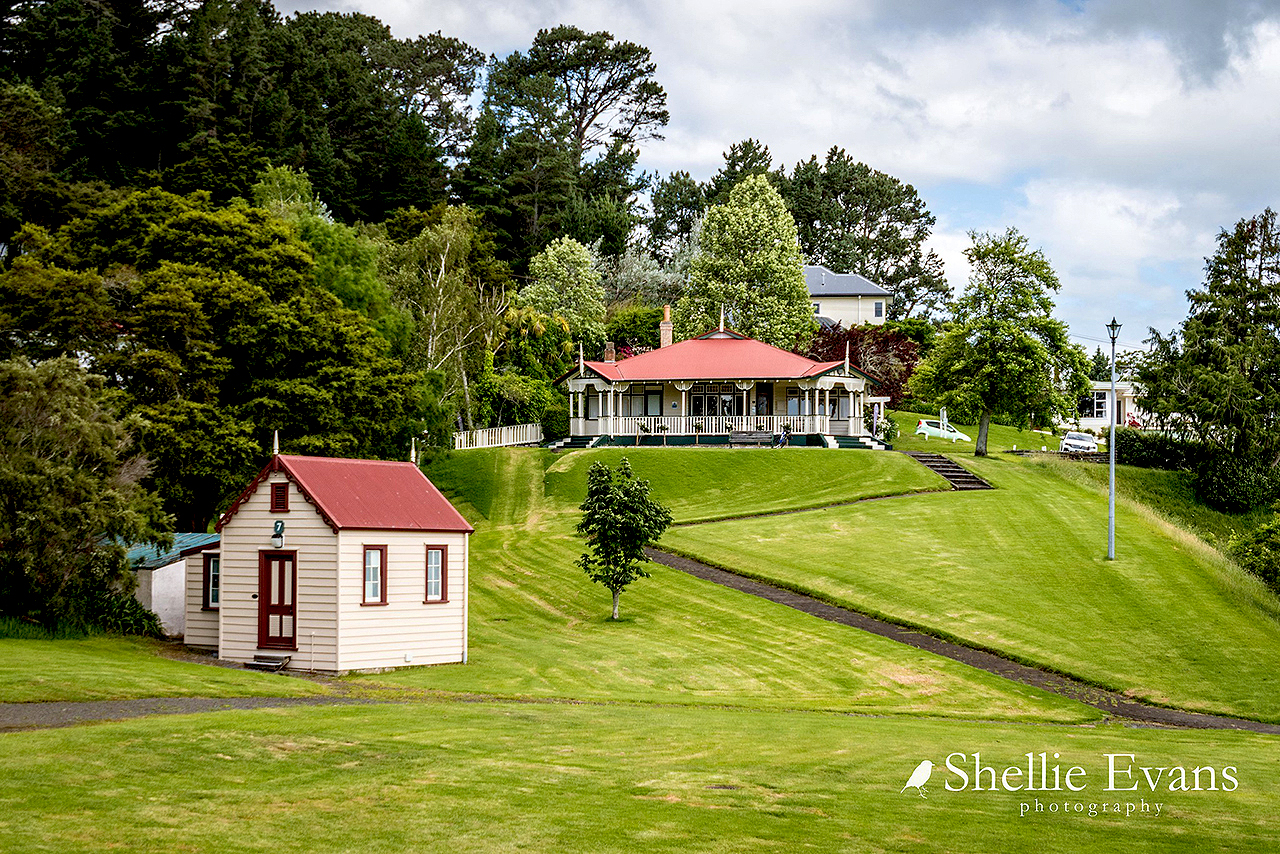During the late nineteenth and early twentieth centuries, the Hot Springs Domain at Te Aroha was the most popular geothermal resort in New Zealand. The Domain was initially established as a reserve in 1881, incorporating an area of 9.1 hectares (20 acres) on the lower slopes of Mount Te Aroha. The many hot springs in this area lay within the traditional territory of Ngati Rahiri, a hapu of Ngati Maru of Hauraki, and had long been frequented by Maori for their perceived healing qualities. By the late 1870s the site had become a popular destination for Pakeha visitors, with tourist numbers increasing after the discovery of gold on Mount Te Aroha in 1880 and the development of Te Aroha township as a mining settlement. The Domain was acquired by the government soon after the passing of the 1881 Thermal Springs District Act, with local Maori - who had played an instrumental role in initially promoting the resort - retaining the right of free access to the waters. The 1881 Act had been introduced to promote Crown ownership of New Zealand's thermal resources, partly in response to their increasing purchase and commercial exploitation by private entrepreneurs. The earliest permanent buildings in the Domain were erected soon after the reserve was brought under the Public Domains Act in 1882, and were overseen by the Te Aroha Hot Springs Board. By 1887, there were seven bath houses and a drinking fountain, with extensive grounds laid out to plans drawn up by Henry Crump, a local engineer and architect. Government money largely financed the development of the facilities, as well as the establishment of a railway from Auckland in 1886. As the centrepiece of the now-burgeoning town of Te Aroha, the spa became the first geothermal resort in the country to receive thousands of visitors on an annual basis. People came to bathe or ingest its waters for health reasons, but also to promenade, listen to music or play genteel forms of sport such as tennis, croquet and bowls. Spas had important associations in nineteenth-century European society as places where the well-to-do could relax and congregate in refined and beautiful surroundings. Although the health and leisure aspects of the reserve were heavily promoted when it was taken over by the Department of Tourism and Health Resorts in 1903, the facilities went into a slow decline after government funding and visitor attention were steadily drawn to Rotorua. The Domain nevertheless remained an extremely popular destination until after the First World War (1914-1918), and continued in a reduced capacity as a spa thereafter. Following closure of many of its facilities in the 1950s and 1960s, the Domain was transferred to the control of the local council (now Matamata-Piako District Council) in 1979, while formally remaining in Crown ownership. The No.7 Bath House appears to have been built in 1886, and is just slightly younger than the earliest remaining bath house in the Domain - the No.2 Bath House. When the Ngati Rahiri leader, Mokena Hou (or Hau) transferred the Domain area to the government in the early 1880s, he specified that local iwi reserve the right to use the Domain waters. It is most likely that the No.7 Bath House was constructed to fulfill this requirement, and it stands as a significant marker of the relationship between Maori and Pakeha during this period. The Bath House is the only remaining building of a large group of structures in this part of the Domain that once included the No. 3 Bath House, a laundry, a fernery and a cold swimming pool. The development of a bath for Maori was first mentioned in May 1885, in the same month that King Tawhiao (?-1894) and his entourage bathed in the Domain. By the middle of the following year the Domain Board had allocated £55 for the construction of a bath house 'for the use of the Maori', although no subsidy was available for a medical officer to attend to them, reportedly due to the small number of indigenous bathers. The present structure was evidently erected after June 1886 and was located close to the No.3 Bath House, whose function changed at this time from a women-only facility to a general sanatorium for invalids. These arrangements can be seen to reflect prevailing attitudes about race in relation to both gender and infirmity. The proximity of Maori bathing to medical treatment was reinforced when the No.7 Bath House was modified or extended in the early 1890s to accommodate a Sulphur Bath in its southern half. The bath was located in a separate room with its own access, and was fed from the No.16 spring. Sulphurous water was initially considered beneficial for people suffering from skin complaints, although the Government Balneologist from 1902, Dr Arthur Wohlmann, stated that it might be reserved for venereal diseases only. A porcelain tub was subsequently installed in the Sulphur Bath, although facilities for Maori consisted of a timber bath until at least 1921. Later modifications included the addition of a lean-to on the eastern side of the structure prior to the 1940s, and in 1960 £300 was granted to restore the building, which was run-down and had been vandalised, presumably partly because of under-use. The building ceased to be utilised altogether for an extended period from 1988, when its water supply from the Mokena geyser was disrupted. The structure has recently been restored for bathing purposes after consultation with iwi, involving significant replacement of damaged timber and the removal of other historic fabric. The baths currently contain facilities for showering and immersion, while the lean-to is used for storage.


Location
List Entry Information
Overview
Detailed List Entry
Status
Listed
List Entry Status
Historic Place Category 2
Access
Able to Visit
List Number
763
Date Entered
12th December 2003
Date of Effect
12th December 2003
City/District Council
Matamata-Piako District
Region
Waikato Region
Extent of List Entry
Registration includes the structure, its footings and the ground beneath its footprint. It includes all fixtures and finishes.
Legal description
Sec 16 Blk IX Aroha SD (Recreation Reserve NZ Gazette 1882 p.1860)
Related listings
Stay up to date with Heritage this month
